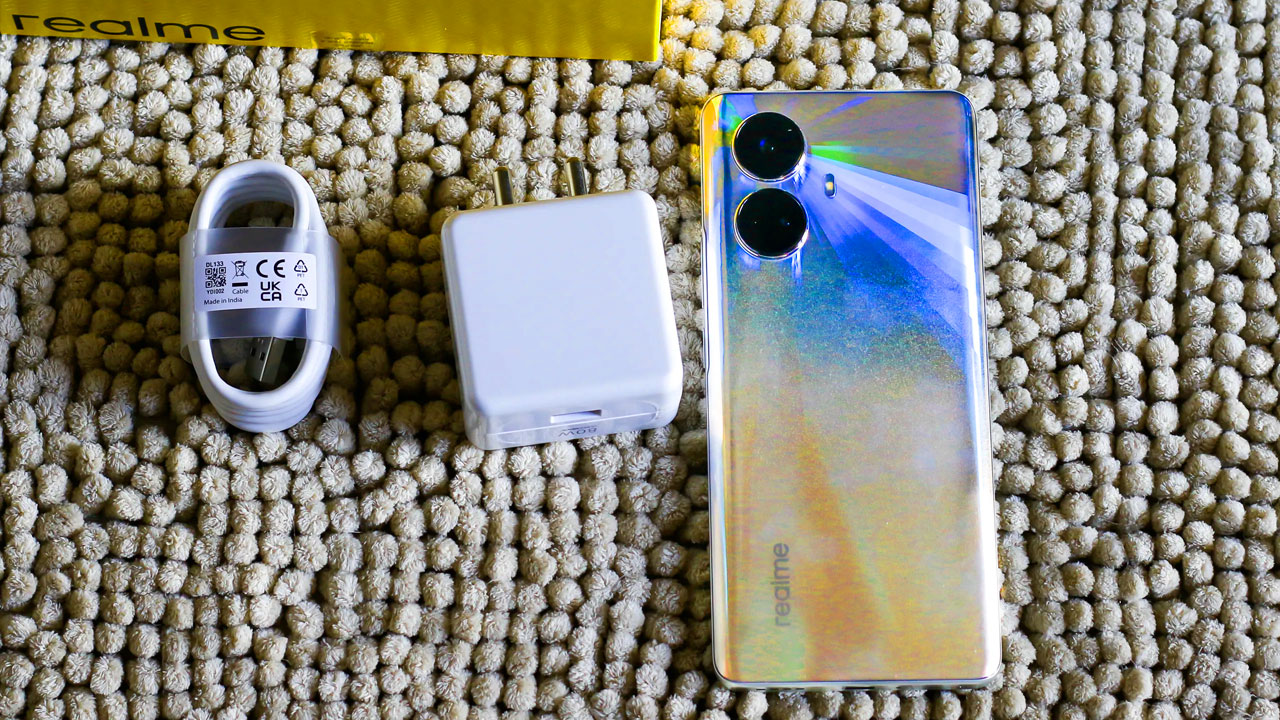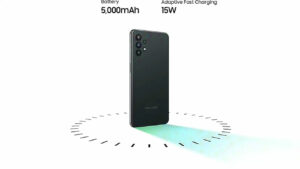About Realme 10 Pro Plus
The Realme 10 Pro+ is a successor to the Realme 9 Pro+ which was released at the start of the year. The Chinese tech maker has launched two new devices in this series, with the Realme 10 Pro (Review) being the other smartphone. The Realme 9 Pro+ was touted as a great value-for-money device at Rs 24,999, and it packed some enticing features. Now, the Realme 10 Pro+ has a duty to live up to its predecessor. The device as a whole has a lot to offer for its price. Starting with its curved display, which is something we don’t often see in this price range. Besides that, it is powered by a MediaTek Dimensity 1080 5G SoC, a 108-megapixel rear camera setup, Android 13 out-of-the-box, and more. So can the Realme 10 Pro+ live up to its name and perform well? Read our full review to find out if this should be your next purchase.
Realme 10 Pro+ Review: Pricing details and availability in India
The Realme 10 Pro+ is available in three variants, much like its predecessor. The device is available with 6GB of RAM and 128GB of storage at a price tag of Rs 24,999. The second variant consists of 8GB RAM and 128GB storage and is priced at Rs 25,999. The final and top-end variant of this series with 8GB of RAM and 256GB of storage is priced at Rs 26,999. The device will be available on sale starting December 14th via Flipkart.
Realme 10 Pro+ Review: Design and display
Realme and its design approach have always been offbeat. The same can be said about the Realme 10 Pro+. While the Realme 9 Pro+ followed the trend of color-changing rear panels, its successor believes in showing off its bling. The Realme 10 Pro+ is available in three color variants: Hyperspace, Nebula Blue, and Dark Matter. We have the Hyperspace colorway with us for this review. At first glance, the back panel slightly reminds us of the Realme C33, albeit with better build materials and ergonomics. The phone also feels premium to hold. The back has a dual-tone effect, with the upper portion displaying a beautiful prism effect that reacts when light falls on it. The bottom portion showcases a glitter finish, which in our opinion, looks quite tacky. But, the cameras enjoy it.
The dual-camera setup has no island around it, and the design reminds us of the Asus Zenfone 9, as well as Realme’s C33. There’s no protection around the individual lenses, and we fear that an unfortunate drop could put the camera setup at risk. Luckily, the company provides a TPU case in the box to avoid this. The cameras also protrude slightly, causing the device to wobble when kept on flat surfaces. The phone feels fairly light, and the weight is well spread out. On paper, it weighs 173 grams and is measured at 7.78mm thickness.
The frames of the device are thin and have a contrasting finish compared to the rest of the device. The display raises slightly over the sides. The right side of the device houses the volume rockers and a power button. The button quality is decent, and they feel clicky. Coming to the top side of the device, it sports a secondary microphone and three more holes, whose purpose we couldn’t figure out yet. Both the top and bottom portions are flat. The left side of the device is clean, while the bottom portion is home to the speaker grille, USB Type-C port, and a SIM tray. The Realme 10 Pro+ has support for dual SIM.
Coming the front side of the device, it sports a 6.7-inch AMOLED display with curved edges. It has a 93.65% screen-to-body ratio. The display has relatively thin bezels at all sides, including the bottom bezel, which Realme claims is measured at 2.3mm thickness. The display refreshes at 120Hz, and the company says this device is the first one to feature 2160Hz PWM (pulse width modulation) Dimming. This lowers the brightness of the display to below 90 nits in very dark conditions. It does so with the help of the higher frequency PWM. This helps with less flicker on the screen aiding in an excellent overall experience at night. However, we couldn’t notice any tangible difference in real-life usage.
One major issue with curved displays is palm rejection. We experienced this with the Moto Edge 30 Fusion a few months ago. To tackle this, Realme has used an anti-mistouch algorithm which, in our experience, worked well. This helps grip the device in a manner that does not invite any unnecessary touches. The 6.7-inch display supports HDR10+ certification and has a peak brightness of 950 nits. Using the device under direct sunlight was not an issue at all. Watching videos on display was a pleasant experience, as is with most AMOLED displays.
The Realme 10 Pro+ comes with the ‘Vivid’ color profile set for the display. It had a lot of vibrancy, and the pictures looked over-saturated, so eventually, we switched to the ‘Natural’ color profile. The device also has a couple of other profiles, such as ‘Cinematic’ and ‘Brilliant’ modes. The former is slightly lean towards a warmer tone. The tones can also be tweaked as per your preference. We spent most of our time watching TV shows and movies on the Realme 10 Pro+ display, and our overall experience was good. Shows such as Better Call Saul, Money Heist, and more look great with deep blacks and colors that pop well.
The Realme 10 Pro+ supports HDR content on YouTube, though we noticed the playback was slightly choppy when trying to watch videos at 2160p with HDR enabled. We encountered the same issue on the Poco F4 5G a couple of months ago. The device supports the Widevine L1 certification, so watching HD content on OTT platforms such as Netflix and Amazon Prime Video was possible. The viewing angles of the display are also good. The content consumption portion is aided well by the stereo speaker setup, which has good clarity and can get quite loud. Realme has also added ‘Ultra Volume’ mode, which boosts the audio to 200% volume. However, we noticed that the back panel, below the camera portion, started to rattle slightly.
The Realme 10 Pro+ allows you to switch between 60Hz and 120Hz. Sadly, there’s no way to force 90Hz manually. This should have been added as it helps with saving battery whenever faster refresh rates are not required. We also noticed that the device runs on 120Hz throughout its UI, though YouTube drops it to 60Hz, while Twitter drops and locks it at 90Hz. Weirdly enough, this same issue is carried forward on games such as Apex Legends Mobile, which pretty much beats the purpose of having a quicker display.
Realme 10 Pro+ Review: Performance and software

The Realme 10 Pro+ is powered by a Mediatek Dimensity 1080 processor. It’s the first phone in India to feature this chipset. The Redmi Note 12 Pro series is rumored to be using the same SoC. The Density 1080 SoC is an octa-core chip and is based on the 6nm fabrication process. It has a clock speed of 2.6GHz and is an upgrade over the Realme 9 Pro+ which was powered by the Density 920 chipset. This entire process is paired with up to 8GB of LPDDR4X RAM. It also has support for RAM expansion, up to 8GB.
It supports several 5G bands and also has Dual SA modes. A tab in settings allows you to enable ‘Smart 5G’, which automatically switches between 5G and 4G depending on the signal to save the battery.
The Realme 10 Pro+ comes with Realme UI 4.0, based on Android 13, out of the box. As of now, there’s no word on system updates for the device. Our unit is running on the November security patch. The overall design language of the UI feels minimalistic. The notification bar is neatly arranged, and necessary shortcuts are aligned for quicker access. Sadly, the Realme 10 Pro+, like most other devices, comes with a tonne of annoying bloatware. Apps such as VidMate, Dream11, Russo, and Tiki, along with the usual bandwagon that consists of Josh, Dailyhunt, and more. The ‘App Market’ also makes a return which is yet another app that loves sending multiple notifications. Apps that are not needed can be uninstalled.
The Realme 10 Pro+ has absolutely no issues in our day-to-day usage. Switching between multiple apps and multitasking didn’t cause the device any issues. We spent most of our time on Google Chrome, Twitter, Instagram, and a couple more apps during our usage. None of these apps caused any issues except for the dip in refresh rates, as mentioned above. We noticed a few minor frame drops in the notification panel whenever we were bombarded with messages, but it’s nothing too concerning. This could also be seen on the UI in certain scenarios, though inconsistent. The Realme 10 Pro+ uses the UFS 2.2 standard for storage.
We ran our usual stress test with Google Maps running on PiP mode and music playing in the background using YouTube Premium. The device did not face a lot of stutters, and scrolling through our Twitter feed was possible. It did not heat up much during the process. The in-display fingerprint sensor and face unlock worked without fail. The device touts a tactile engine 2.0, and the haptic feedback was good.
Coming to the benchmarks, the Realme 10 Pro+ registered a score of 512682 on AnTuTu tests which are higher than its predecessor. Tests on Geekbench 5 returned 839 and 2348 in single-core and multi-core scores, respectively. As for benchmarks run on 3DMark, the Realme 10 Pro+ scored 4087 in the Sling Shot Extreme test based on OpenGL. We ran games such as Apex Legends Mobile, Call of Duty Mobile, and Asphalt 9: Legends. Apex Legends ran smoothly on Ultra HD graphic settings and High frame rates. It was able to give us constant 40 fps throughout the game, except for in certain scenarios, such as using Octane’s Stim, which saw the frames drop to 36 fps.
This did not hinder our experience much. Call of Duty: Mobile was able to support ‘Max’ framerates only on low graphic settings. We played a couple of Team Deathmatch rounds on ‘High’ graphic settings and ‘Very High’ framerates. The game ran smoothly without any hiccups. After around 15 minutes of gaming, the top portion of the device, around the camera, was slightly warm to the touch. Asphalt 9: Legends ran well at ‘High Quality’ graphic settings.
Realme 10 Pro+ Review: Cameras
The Realme 10 Pro+ features a triple-camera setup at the back. It consists of a 108-megapixel primary camera with Samsung’s HM6 sensor, an 8-megapixel ultra-wide angle camera, and a Macro lens. The device bids adieu to the 50-megapixel Sony IMX766 sensor, which was used in the Realme 9 Pro+. Sadly, that also takes away optical image stabilization (OIS). The hole-punch camera at the front of the Realme 10 Pro+ houses a 16-megapixel shooter for selfies. The camera UI is straightforward and similar to previous models. Every mode is neatly organized for ease of access.
Realme 10 Pro+ Review: Battery and charging

The Realme 10 Pro+ packs a 5000mAh battery inside. It’s interesting to see how such a slim form factor device has managed to fit in such a chunky battery. The device lasted us almost an entire day with a screen-on time of over five hours and 25 minutes.
Our usage throughout the day included watching videos, a bit of navigation on Google Maps, playing a couple of games, and clicking photos. If you are a light user who doesn’t game much, stretching the battery to last an entire day should be possible.
Coming to charging, the Realme 10 Pro+ comes with an 80W SuperVOOC charger inside the box. However, the device is rated at 65W charging. The company claims a 50 percent charge in 17 minutes. In our experience, the device charged to 28 percent in 13 minutes and skyrocketed to 41 percent in 17 minutes. It took the device approximately 26 minutes to reach 60 percent.
Realme 10 Pro+ Review: Verdict
It’s interesting to see the curved display technology trickle down to this price, and Realme clearly wants this to be their selling point. The curved display on this device provides an excellent experience for daily usage and content consumption. Realme’s palm rejection technology has been working well in our experience, and it’s a good addition. While the Realme 10 Pro+ looks and feels like a premium smartphone, the design approach with the prism effect and the glitters was a bit too in the face for us.
As for the performance part, the Realme 10 Pro+ beats its predecessor in the number game, but not by a huge margin. So, the performance difference in both generations should not be major. Furthermore, gaming on the device is possible in medium graphic settings for more consistent performance. While variable refresh rates in certain apps and games are a bummer, the device performs well overall.
Realme 10 Pro Plus Specifications
SUMMARY
| Processor Chipset | MediaTek Dimensity 1080 MT6877V |
| RAM | 8 GB |
| Rear Camera | Triple (108MP + 8MP + 2MP) |
| Internal Memory | 128 GB |
| Screen Size | 6.7 inches (17.02 cm) |
| Battery Capacity | 5000 mAh |
PERFORMANCE
| Chipset | MediaTek Dimensity 1080 MT6877V |
| No Of Cores | 8 (Octa Core) |
| CPU | 2.6GHz, Dual-core, Cortex A782GHz, Hexa Core, Cortex A55 |
| Architecture | 64-bit |
| Fabrication | 6 nm |
| RAM | 8 GB |
| RAM Type | LPDDR4X |
| Graphics | Mali-G68 MC4 |
DESIGN
| Height | 6.36 inches (161.5 mm) |
| Width | 2.91 inches (73.9 mm) |
| Thickness | 0.3 inches (7.7 mm) |
| Weight | 172.5 grams |
| Colors | Hyperspace, Dark Matter, Nebula Blue |
| Screen Unlock | Fingerprint, Face unlock |
DISPLAY
| Resolution | 1080 x 2412 pixels |
| Aspect ratio | 20:9 |
| Display Type | AMOLED, Curved Display, HDR 10+ |
| Size | 6.7 inches (17.02 cm) |
| Bezel-less display | Yes, with Punch-hole |
| Pixel Density | 394 pixels per inch (PPI) |
| Brightness | 800 nits |
| TouchScreen | Yes, Capacitive, Multi-touch |
| Color Reproduction | 16M Colors |
| Screen to body percentage | 90.81 % |
CAMERA
| Rear camera setup | Triple |
| Rear camera(Primary) | 108 MP resolution wide Angle (83° FoV) lens/1.75 aperture23.6 mm focal length1.67″ sensor size0.64µm pixel size |
| Rear camera(Secondary) | 8 MP resolution ultra-Wide Angle lens/2.2 aperture15.9 mm focal length4.0″ sensor size1.12µm pixel size |
| Rear camera(Tertiary) | 2 MP resolution macro lens/2.4 aperture21.9 mm focal length5.0″ sensor size1.75µm pixel size |
| Front camera setup | Single |
| Front camera(Primary) | 16 MP resolution wide Angle (82° FoV) lens/2.45 aperture24 mm focal length3.1″ sensor size1µm pixel size |
| Sensor | ISO-CELL |
| Flash | LED Rear flash |
| Digital zoom | 20x |
| Video Resolution(Rear) | 3840×2160 @ 30 fps1920x1080 @ 30 fps |
| Video Resolution(Front) | 1920×1080 @ 30 fps1280x720 @ 30 fps |
| Camera Features | Auto FlashAuto FocusFace detection touch to focus |
| Shooting Modes | Continuous ShootingHigh Dynamic Range mode (HDR) |
BATTERY
| Type | Li-Polymer |
| Capacity | 5000 mAh |
| Removable | No |
| Fast Charging | Yes, Super VOOC, 67W |
| Charging speed | 50 % in 17 minutes (claimed by Brand) |
| Wireless Charging | No |
STORAGE
| Internal Memory | 128 GB |
| Memory type | UFS 2.2 |
| Expandable Memory | No |
SOFTWARE
| Operating System | Android v13 |
| Custom UI | Realme UI |
CONNECTIVITY
| SIM Configuration | Dual SIMSIM1: NanoSIM2: Nano |
| Network | SIM1: 5G, 4GSIM2: 4G |
| SIM1 Bands |
5G:FDD N1 / N3 / N5 / N8 / N28 ; TDD N40 / N41 / N784G:TD-LTE 2600(band 38) / 2300(band 40) / 2500(band 41) / 2100(band 34) / 1900(band 39) ; FD-LTE 2100(band 1) / 1800(band 3) / 2600(band 7) / 900(band 8) / 700(band 28) / 850(band 5) / 850(band 19)
See More
|
| SIM2 Bands |
5G:FDD N1 / N3 / N5 / N8 / N28 ; TDD N40 / N41 / N784G:TD-LTE 2600(band 38) / 2300(band 40) / 2500(band 41) / 2100(band 34) / 1900(band 39) ; FD-LTE 2100(band 1) / 1800(band 3) / 2600(band 7) / 900(band 8) / 700(band 28) / 850(band 5) / 850(band 19)
See More
|
| Voice over LTE(VoLTE) | Yes |
| Wi-Fi | Yes, with a/ac/ax/b/g/n/n 5GHz, MIMO |
| Wi-fi features | Mobile Hotspot |
| Bluetooth | Bluetooth v5.2 |
| USB | USB Type-C, Mass storage device, USB charging, USB On-The-Go |
| USB OTG Support | Yes |
| GPS | Yes with A-GPS, GLONASS |
| NFC Chipset | No |
| Infrared | Yes |
SOUND
| Speaker | Yes |
| Audio Jack | Yes, USB Type-C |
| Video Player | Yes, Video Formats: H.263, H.264, H.265, MP4, MPEG2, MPEG4, VP8 |
SENSORS
| Fingerprint sensor | Yes, On-screen |
| Face Unlock | Yes |
| Other Sensor | Light sensor proximity sensorAccelerometerCompassGyroscope |




